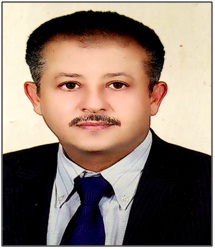BIOFILM FORMATION AND ANTIFUNGAL SUSCEPTIBILITY OF CANDIDA ISOLATES FROM ORAL CAVITY AFTER THE INTRODUCTION OF FIXED ORTHODONTIC APPLIANCES
Keywords:
Antifungal resistance, biofilm formation, Candida species, Candida albicans, Fixed Orthodontic Appliances (FOA), non-albicans species, oral cavityAbstract
Background and aims: Fixed Orthodontic Appliances (FOA) act as diverse impact zones and modify microbial adherence and colonization, acting as unfamiliar reserves and potential sources of infection This study was conducted to inspect the effect of the introduction of fixed orthodontic appliances on the growth and adherence (biofilm formation) of Candida species. And also to reveal the species distribution and antifungal sensitivity to isolated Candida species.
Material and methods: The trial group was chosen from orthodontic patients whom were inspected clinically as soon as to get baseline information prior to active treatment. The group included 210 patients; 165 females, and 45 males, (mean age 21.6 ± 4.5 years). Clinical, demographic, and risk factor data were collected in a standard questionnaire and then each individual was directed to perform an oral rinse with phosphate-buffered saline, which was expectorated and processed proposed for the isolation and identification of Candida species by standard methods. After that, the isolated Candida species were tested for biofilm production by the phenotypic method i.e. Tissue culture palate methods (TCPM). Finally, antibiogram susceptibility pattern of oral Candida species was done by Kirby-Bauer disc diffusion method for amphotericin B, ketoconazole, and fluconazole.
Results: The most common yeast colonized oral cavity after the introduction of FOA was C. albicans (72.5%), followed by C. glabrata and C. tropicalis (12.5%), while Candida parapsilosis only was 2.5%. The rate of formation of biofilms was 52.5% for all types of Candida, and it was found that biofilm formation occurs more frequently among C. tropicals and C. glabrata (60%) than C. albicans (48.3%). All Candida species isolates were sensitive to amphotericin B and ketoconazole while resistance to fluconazole was found in 40% of C. tropicalis and 20% in C. glabrata and 13.8% in C. albicans.
Conclusion: The present study proved that C. albicans is still the major isolate from the oral cavity after the introduction of FOA, but non-albicans species colonization is raised and FOA might be a factor for biofilm formation. The C. tropicalis and C. glabrata were more– biofilm-producers compared to C. albicans. The isolated species in the current study are less susceptible to fluconazole and drug resistant factor in the Candida species isolates was found to be associated with biofilm formation.

Peer Review History:
Received 4 June 2020; Revised 11 July; Accepted 23 August; Available online 15 September 2020
Academic Editor: Essam Mohamed Eissa , Beni-Suef University, Egypt, dressamceutics@yahoo.com
, Beni-Suef University, Egypt, dressamceutics@yahoo.com
Reviewer(s) detail:
Dr. Wadhah Hassan Edrees , Hajjah University, Yemen, edress2020@gmail.com
, Hajjah University, Yemen, edress2020@gmail.com
Dr. Muhammad Zahid Iqbal , AIMST University, Kedah Darul Aman, Malaysia, drmmziqbal@gmail.com
, AIMST University, Kedah Darul Aman, Malaysia, drmmziqbal@gmail.com
Downloads

Published
How to Cite
Issue
Section

This work is licensed under a Creative Commons Attribution-NonCommercial 4.0 International License.









 .
.